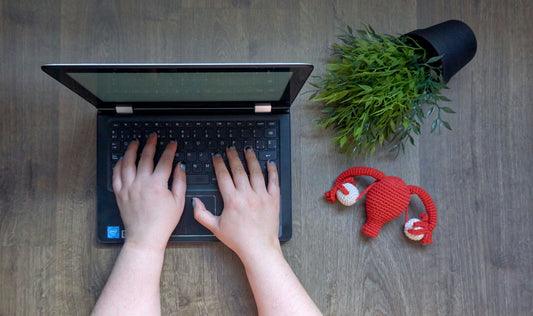I have celiac disease, now what?
Q: After years and years of struggles with my health I have finally been diagnosed with celiac disease. My doctor told me I need to stop eating gluten forever, but didn't tell me why or how. I am constantly checking packets and looking for anything that says 'gluten free', but it's still hard. Can you please explain what celiac disease is and how I can eat gluten free without starving all the time. - Rebecca S.
What is Celiac disease?
Celiac disease is an autoimmune disorder affecting the gut in which a person can not tolerate gluten. Genetic predisposition can lead people to develop celiac disease, and so it will often run in the family. Celiac disease can begin at any age, and will often develop after a child is introduced to baby cereals containing gluten, yet it can develop later in life triggered by another illness, stress, pregnancy or infection.
In someone with celiac disease, if gluten is consumed it causes damage to the intestinal wall. Gluten triggers the immune system, and it responds by attacking the villi (finger-like projections) on the intestinal wall. The villi are responsible for absorbing the nutrients from our food, without functioning villi a person can become malnourished and underweight quickly.
Signs and symptoms
The effect of celiac disease is wide reaching and person to person symptoms can differ.
Common symptoms
- Gas
- Bloating
- Stomach cramps
- Diarrhea
- Constipation
- Nausea
- Vomiting
Some people won't show signs of gut issues, and instead, may have these symptoms:
- Anemia
- Depression and anxiety
- Joint pain
- Brain fog or inability to concentrate
- Headaches
- Fatigue
- Acne
What is gluten?
Gluten is a protein found in wheat, rye and barley, it helps food to maintain it's shape and texture.
When looking for gluten in food products the easiest thing to do is to check the allergy panel. Each food item must state the potential allergens and will say for example, "may contain: nuts, soy, gluten". If this doesn't appear on the product then you need to check the ingredients, look for the words; "wheat, barley or rye" as well as derivatives of these grains such as "malt, beer, thickening agent, wheat starch, soy sauce, miso, artificial flavours, hydrolyzed vegetable protein, and modified food starch. This is not an extensive list of gluten containing food additives so make sure to look for ingredients you don't recognise and look them up, or look at the allergy section.
Other places gluten can hide: ice cream, sauces, mayonnaise, flavoured chips, snack bars, crackers, beer, cider, chocolate and candy, and frozen fries and hashbrowns.
In saying all of this, it is much easier for people avoiding gluten to choose whole unprocessed foods which are naturally gluten-free. When you do this you can be sure of what you are eating and it also reduces the risk of cross-contaminated food.
Here is a list of gluten-free grains:
- Amaranth
- Buckwheat
- Millet
- Corn/Polenta
- Quinoa
- Sorghum
- Teff
Some swaps to help you adjust:
Sweet baking: almond flour, coconut flour, or rice flour
Savoury baking or thickening: gluten free corn flour, rice flour, buckwheat flour
Soy sauce: tamari
Miso: plenty of gluten free options available
Pasta: vegetable spirals, or pasta made from buckwheat or brown rice
A note on oats:Technically oats are gluten free. They contain a protein similar to gluten, but not the same, and research has found that most people with celiac disease can tolerate oats well. The problem with oats is there is a very high risk of contamination. Most oats are processed in factories where other gluten containing grains are processed too. If you are eating oats then make sure they are certified gluten-free I suggest excluding oats to begin with and introduce them later on once your gut has had time to heal.
I have been diagnosed with celiac disease, now what?
The first thing to do is remove all gluten from your diet. You need to be extremely strict with the exclusion of gluten, even a tiny bit can cause a flare up and your symptoms to return.
When choosing gluten-free foods focus on foods that are naturally gluten-free. For example fruits and vegetables, beans and lentils, rice, quinoa, buckwheat, and amaranth are all naturally gluten-free and full of nutrients. In contrast, you can buy products that traditionally contain gluten but have been made gluten-free, cakes, biscuits and bread are good examples. Beware of these! They are often made with highly processed flours and are full of fillers and additives to try to create the same texture as a 'normal' biscuit, cake or bread. These items offer no nutritional benefit and the additives can be harmful to an already sensitive digestive tract.
It is a great idea to speak with a natural health professional that can help you to repair the damage in your gut and help you form a balanced gluten-free diet. One of the issues of removing gluten-containing grains is that you also remove a substantial source of B vitamins and fibre. A nutritionist can help you work around this and find alternative foods you that are safe for you to eat and that you enjoy.




